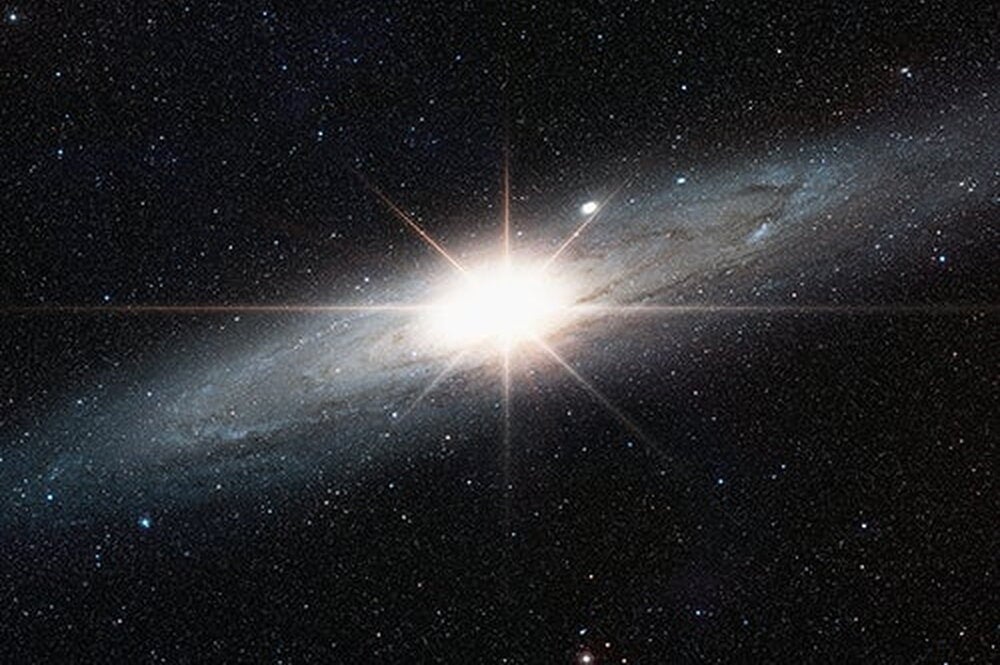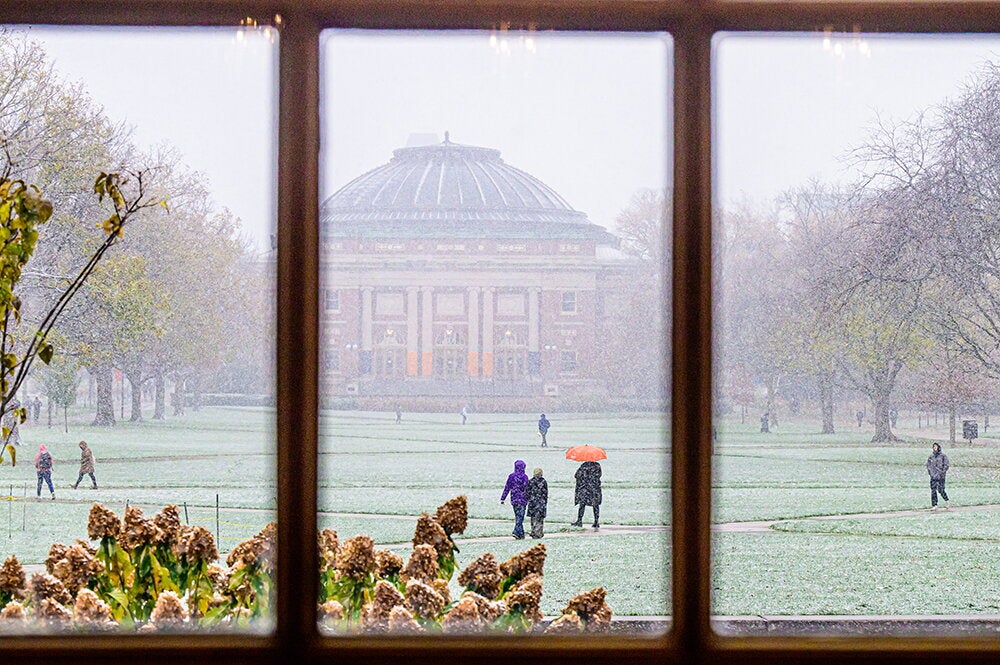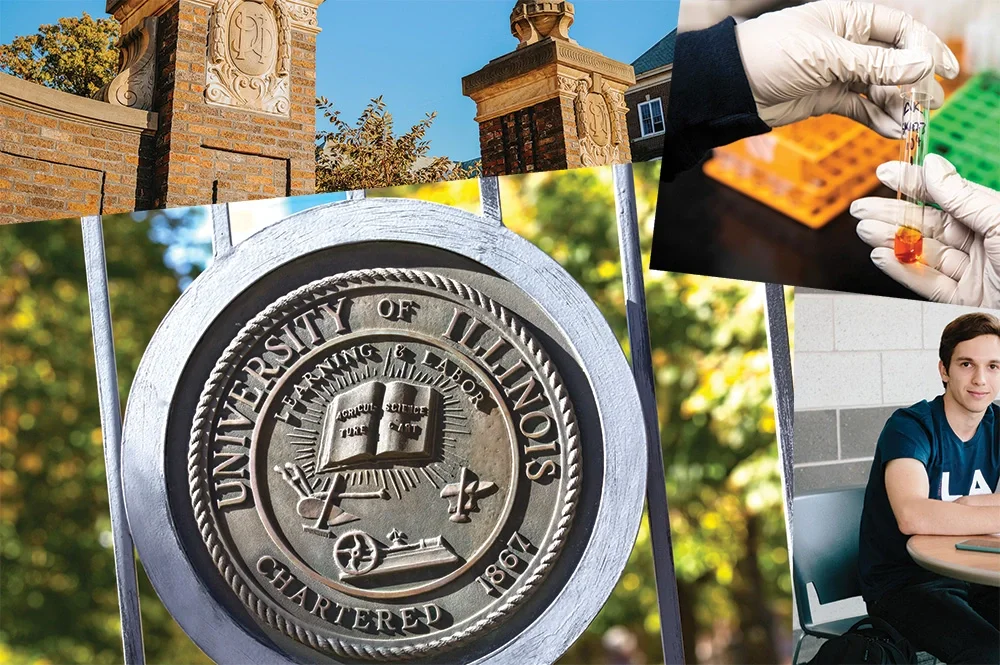
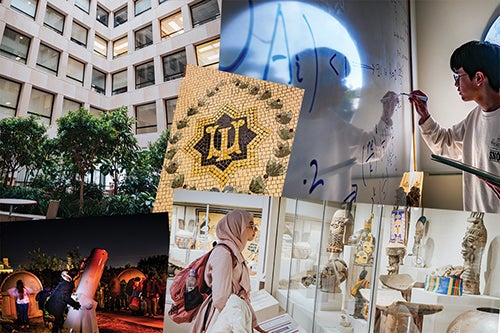
How are schools of thought defined? The College of Liberal Arts & Sciences has more than 60 academic units, and some, like English and chemistry, have been within LAS since the beginning. But how is it that the Department of Chemical & Biomolecular Engineering, for example, resides in LAS, while physics, the science of matter and energy, is within the Grainger College of Engineering?
Every academic institution has its own distinct identity. It’s revealed by the history that exists at the borderlines and contours within itself.
The sciences of formal expression, speculation, and imagination
When the University of Illinois was founded in 1867, it consisted of the departments of agriculture, the military, polytechnics, chemistry and natural sciences, trade and commerce, and general science and literature.
Their descriptions reflected foundational principles. Within general science and literature, for example, were the natural sciences, or, as stated in the 1867 course catalogue, the “sciences of observation and experiment”; the linguistic and philological sciences, or “sciences of formal expression”; philosophical and speculative sciences, or the “sciences of consciousness and reflection”; and mathematics, or the “science of imagination and calculation.”
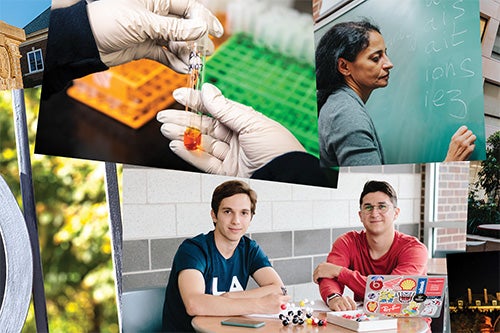
Unexpected beginnings
For their own reasons, some lost to time, academic units often originated in unexpected places. The study of astronomy evolved from a means to navigate ships into a scientific endeavor to understand the motion and properties of the universe. Tony Wong, head of the Department of Astronomy, said all the faculty members have at least undergraduate degrees in physics.
“We also expect our astronomy majors to learn a lot of physics, perhaps more than they initially expected,” Wong said. Historically, however, astronomy at Illinois was within the Department of Mathematics until until it became its own department in 1921.
Physics, meanwhile, has always been grouped with engineering studies at Illinois. Professor and future dean of the College of Engineering Stillman Robinson, who introduced the subject to campus in 1870, believed it to be fundamental to the education of every engineer.
The Department of Chemical & Biomolecular Engineering originated within the College of Science (a precursor to LAS) when Samuel Parr, a professor of applied chemistry and founder of Parr Instrument Company, created a curriculum for chemical engineering in 1901. The curriculum became a department in 1968, and in 2002 it assumed its modern name to reflect the role of biology in product engineering.
Evolutions of thought
Units have come and gone. The Department of Ceramics Engineering was founded in the College of Science by geology professor Charles W. Rolfe, who launched it in 1905 to study the technology of clay wares. It even had its own building erected in 1916. In 1989, the department was merged into the Department of Materials Science and Engineering.
In the early 1900s the Department of Household Science faced many skeptics, according to a graduate dissertation by Elisa Miller (MA, ’97; PhD, ’04; history). It had supporters in the College of Science, however, where household science students took classes in chemistry, bacteriology, and other fields. “Our practice in cooking is always to illustrate a principle just as an experiment in the chemical laboratory does,” one student argued. Today the Department of Human Development and Family Studies resides in the College of ACES.
The College of Education, formed in 1918, was originally a school within the College of Literature and Arts (a precursor to LAS). In 1916, psychology professor William Bagley, one of its first directors, oversaw the construction of a new building, which is now University Laboratory High School.
The Department of Economics was formed by professor David Kinley. In 1902, when Kinley formed the School of Commerce, he wanted it to include political science and industrial economics, but a compromise kept political science within the College of Literature and Arts.
In 2003, the Department of Economics moved back to LAS. “Economics is a central social science discipline that resides in most campuses in the College of Arts and Sciences,” read the proposal, supported by the College of Business.
Art history … and the history of art
An LAS undergraduate degree in the history of art launched in the 1970s, but it was administered by the College of Fine and Applied Arts, which offers an art history degree. In 2003 the program added a studio art class to its requirements, which brought some academic soul-searching about the purpose of the degree.
In the end the degree description still defines the program clearly as LAS: “History of art is a flexible discipline,” it reads. “Social, economic, religious, philosophical, and other factors are often inextricably involved in the creative matrix of objects of art… Like the other humanities, history of art as an undergraduate area of concentration offers an enrichment of and preparation for life.”
Do you know of any quirky lore about how LAS was formed or have questions about what is (or isn’t) part of the college? Contact us at laseditor@illinois.edu
Editor's note: This story first appeared in the Fall 2024 issue of The Quadrangle.
